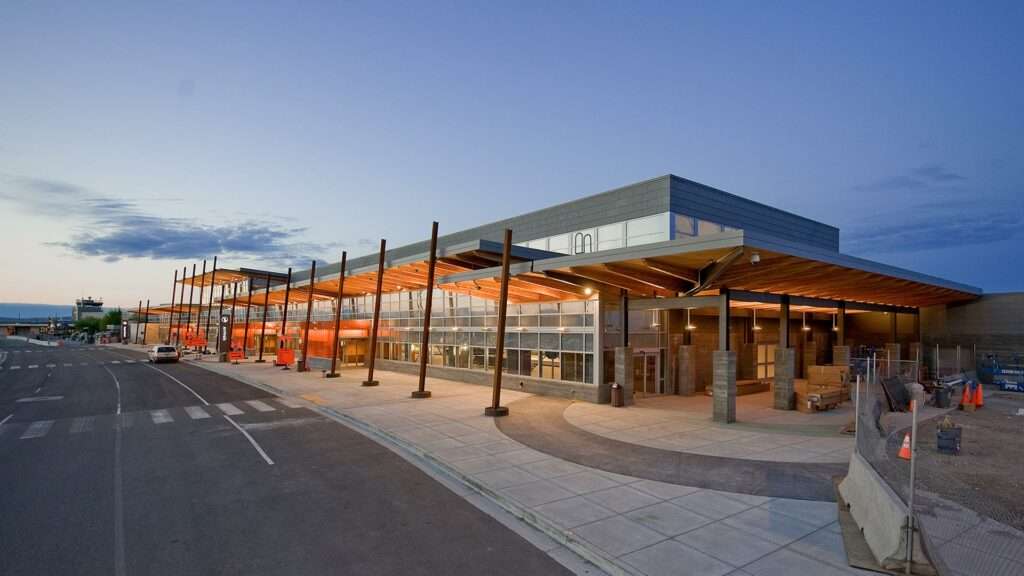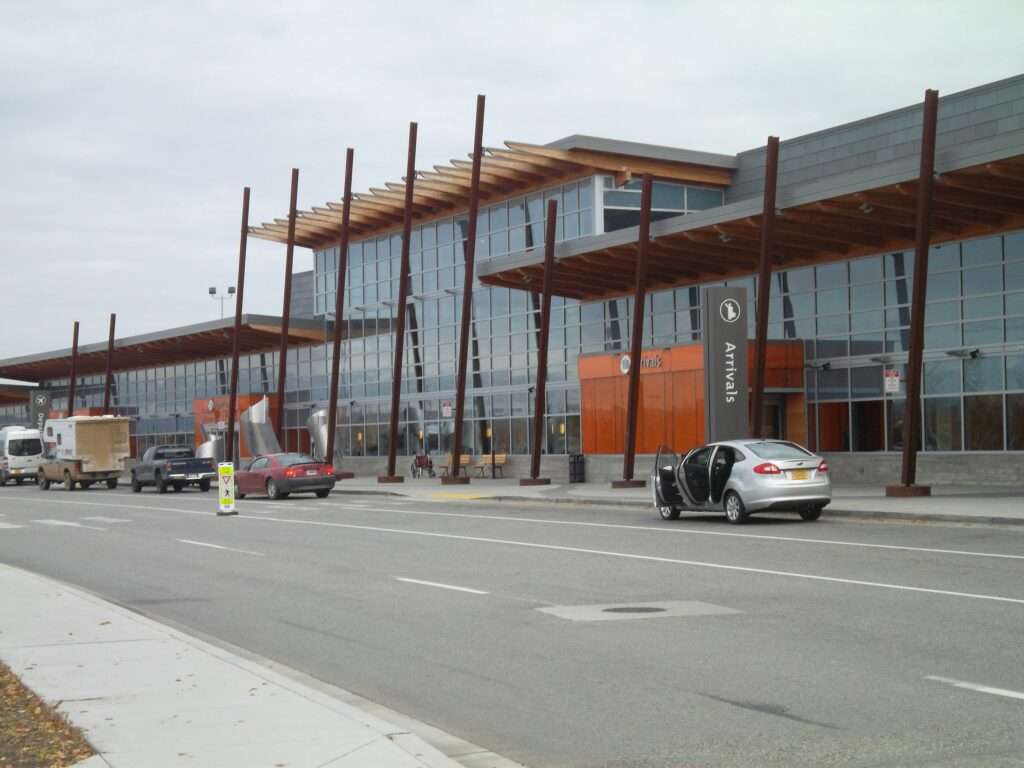Fairbanks International Airport (FAI) boasts a rich history intertwined with the development of Alaska‘s aviation landscape.
Its story begins not with grand terminals, but with the pioneering spirit of early aviators who dared to land on frozen fields.
Today, FAI serves as a crucial transportation hub for interior Alaska, connecting the region to domestic and international destinations.
Early Days: Taking Flight in the Alaskan Interior (1920s-1940s)
Long before FAI’s runways existed, Fairbanks relied on makeshift landing strips.
Weeks Field, or Weeks Ball Park, established in 1923, served as the community’s first aviation hub.
This multi-purpose field witnessed the arrival of Carl Ben Eielson in 1923, who kickstarted Alaskan Airways, marking the dawn of commercial aviation in the region.
Throughout the mid-20th century, Weeks Field accommodated most general aviation and commercial traffic, while larger air carrier aircraft utilized Ladd Air Force Base (now Fort Wainwright).
The need for a dedicated civilian airport became increasingly evident as air travel gained traction.
The harsh Alaskan climate demanded a purpose-built facility specifically designed to handle the challenges of the region.
From Dream to Reality: The Birth of Fairbanks International Airport (1940s-1950s)
Following World War II, the vision for a new civilian airport solidified.
In 1948, Congress authorized the construction of Fairbanks International Airport.
Shifting operations from existing facilities presented a logistical challenge.
The new airport opened its doors in 1951, but initial operations were far from smooth.
Minimal facilities and the absence of a terminal building forced airlines to rely on temporary structures.
Passengers endured the elements until the completion of the much-needed passenger terminal in 1954.

Despite these early hurdles, FAI quickly established itself as the primary commercial aviation hub for Fairbanks.
Alaska Airlines, a major player in the region’s air travel scene, initially used FAI as its main hub, connecting Fairbanks to Seattle, Portland, and other Alaskan destinations.
However, by 1967, the airline shifted its focus to Anchorage, impacting Fairbanks’ position as a central hub.
Stepping onto the World Stage: Growth and International Connections (1960s-1980s)
The 1960s marked a period of significant growth for FAI.
Pan American World Airways, a giant in the aviation industry, inaugurated passenger service to Fairbanks from Seattle in 1960, solidifying the airport’s role as a vital connection point.
The construction of the East Ramp in 1969-1970 further bolstered FAI’s infrastructure.
This dedicated space catered to smaller air carriers, air taxi operators, and private planes, demonstrating the airport’s commitment to serving all segments of the aviation community.
A pivotal moment arrived in the 1970s during the construction of the Trans-Alaska Pipeline System.
The project spurred a surge in both passenger and cargo traffic through FAI, highlighting its critical role in supporting major infrastructure endeavors.
Furthermore, Fairbanks’ strategic location began to attract international attention in Alaska.
Throughout the late 1970s, airlines like Japan Airlines and Korean Air began using FAI as a technical stop for transpacific cargo flights.
This development marked the airport’s first foray into the international aviation arena.
Adapting to a Changing Landscape: Modernization and Expansion (1990s-Present)
The final decades of the 20th century and the early 21st century witnessed ongoing efforts to modernize and expand FAI’s facilities.
Recognizing the growing demands of air travel, airport authorities undertook several expansion projects, including the extension of runways and the construction of additional cargo facilities.
Technological advancements also played a crucial role.
The implementation of modern air traffic control systems and instrument landing systems enhanced safety and efficiency, ensuring smooth operations in all weather conditions.
Today, FAI remains a vital transportation hub for interior Alaska.
It boasts a robust domestic market, with direct flights to major U.S. cities.
Additionally, FAI continues to handle international cargo traffic and even offers limited international passenger service.
The airport plays a critical role in supporting tourism, a cornerstone of the Alaskan economy.
Tourists from around the world arrive at FAI to embark on adventures in the breathtaking Alaskan wilderness.
FAI also serves as a vital link for essential cargo deliveries, ensuring that interior Alaska remains connected to the global marketplace.
As Fairbanks International Airport looks to the future, it does so with a rich history behind it.
From its humble beginnings on a frozen field to its current status as a global gateway, FAI has consistently adapted and evolved to meet the ever-changing needs of the region.

Click the banner to subscribe to our weekly newsleter.

Click the photo to join our WhatsApp channel so then you can stay up to date with everything going on in the aviation industry!









